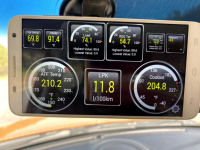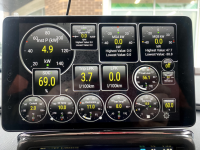Used my daughters Kia Soul again for simplicity. No hitch on the Volt yet and I didn’t want the first test to be a 600km essential haul right out of the gate - the tried and true vehicle was the go-to.
Jury is still out on if the Volt is going to even haul it honestly given the weight and aero drag. I scaled it in Bowmanville on the way back and was a little surprised at the number - then again they did sell it to us with all the contents (and Quite a bit of it) plus a huge battery and a full propane tank. And there was probably 50 lbs of snow and ice still frozen to it lol.
That’s another bridge to cross yet. I just wish the hitch wasn’t a $500 gamble for such. Gotta admit the possibility of selling the Gen1 and moving up to a Gen2 isn’t in my head again. I may ask to borrow my BIL’s 2018 Volt (which already has a class 2 hitch) and do a test overnighter somewhere come the nicer weather. If it hauls it with ease it’s worth considering in the end with mine. If it’s on the edge with the Gen2 (which is a more capable tow vehicle vs the gen1 with better engine output and stronger drivetrain in general) then selling the gen1 and coming up with another plan is the best I think.
Jury is still out on if the Volt is going to even haul it honestly given the weight and aero drag. I scaled it in Bowmanville on the way back and was a little surprised at the number - then again they did sell it to us with all the contents (and Quite a bit of it) plus a huge battery and a full propane tank. And there was probably 50 lbs of snow and ice still frozen to it lol.
That’s another bridge to cross yet. I just wish the hitch wasn’t a $500 gamble for such. Gotta admit the possibility of selling the Gen1 and moving up to a Gen2 isn’t in my head again. I may ask to borrow my BIL’s 2018 Volt (which already has a class 2 hitch) and do a test overnighter somewhere come the nicer weather. If it hauls it with ease it’s worth considering in the end with mine. If it’s on the edge with the Gen2 (which is a more capable tow vehicle vs the gen1 with better engine output and stronger drivetrain in general) then selling the gen1 and coming up with another plan is the best I think.
















